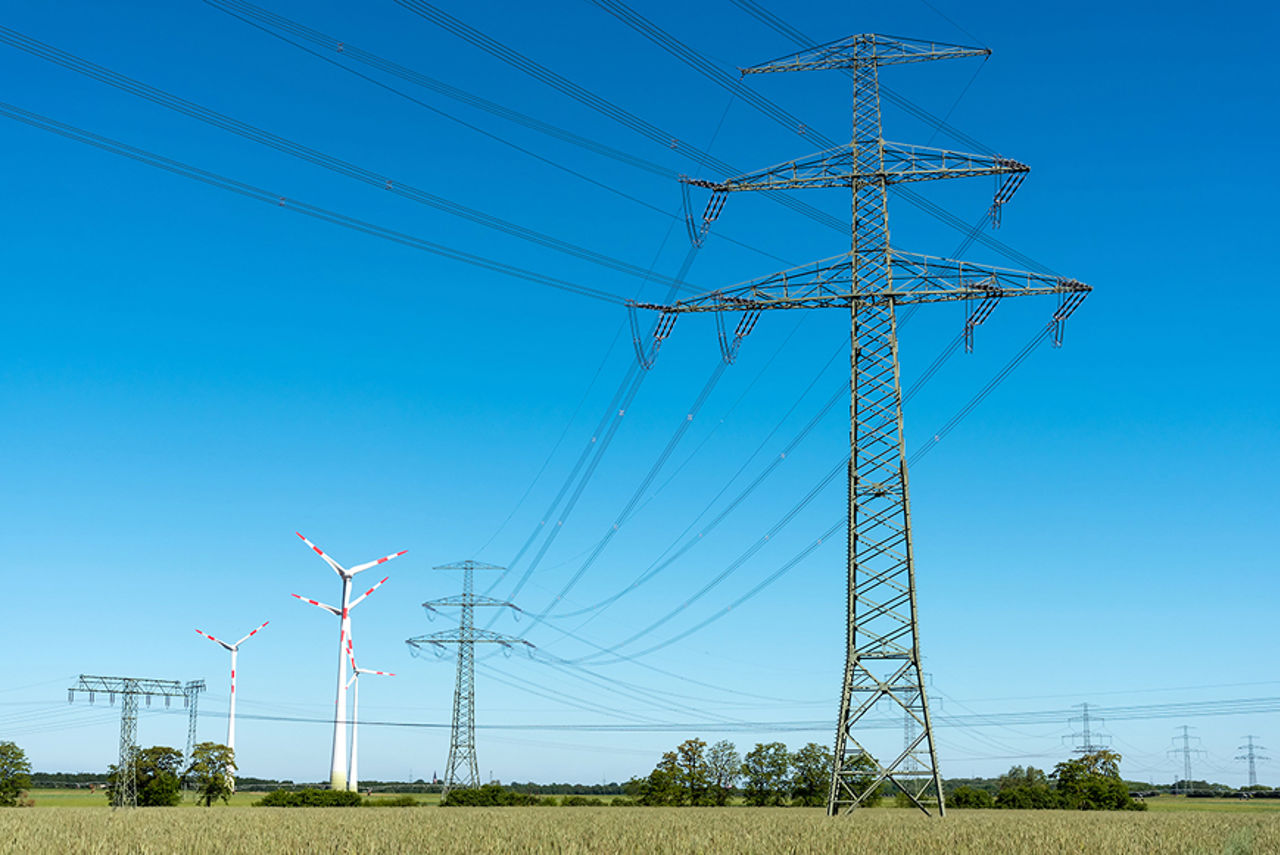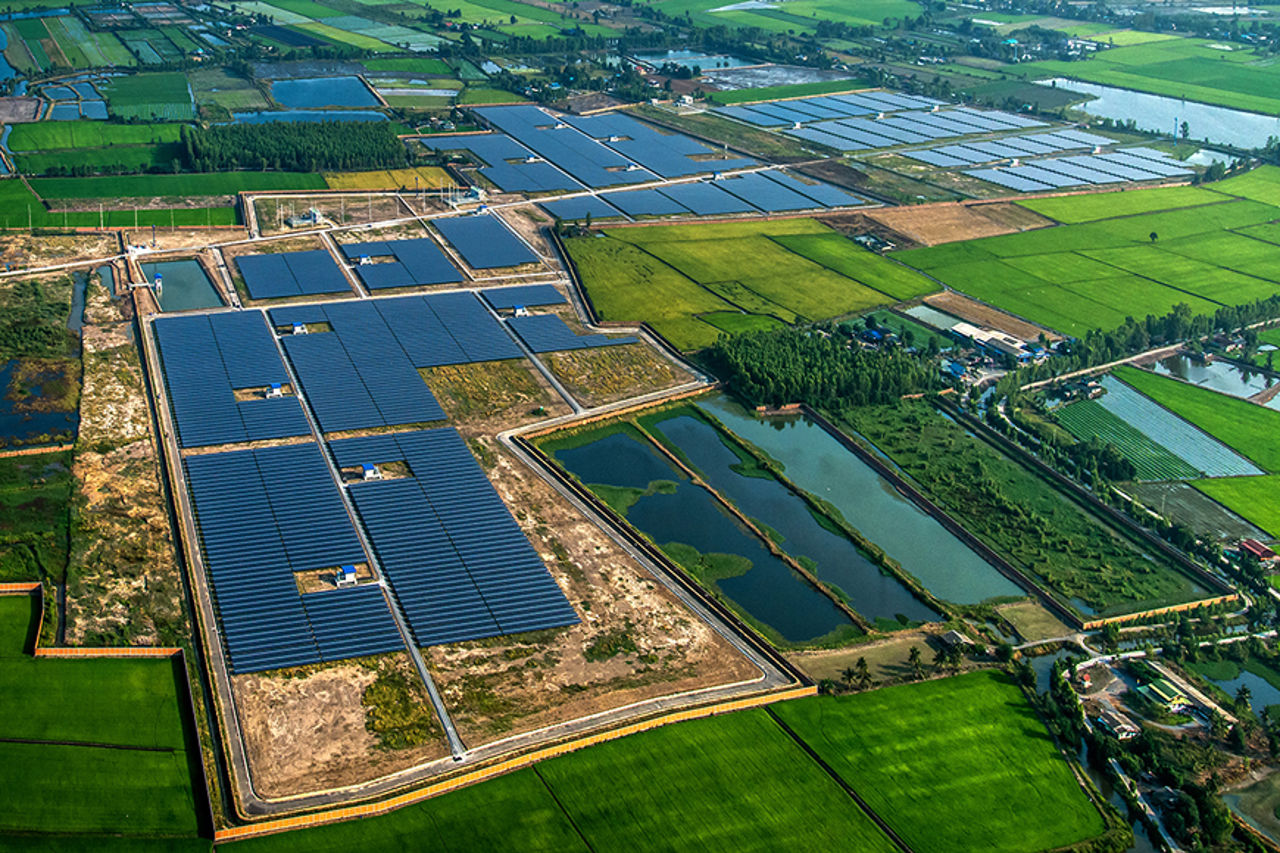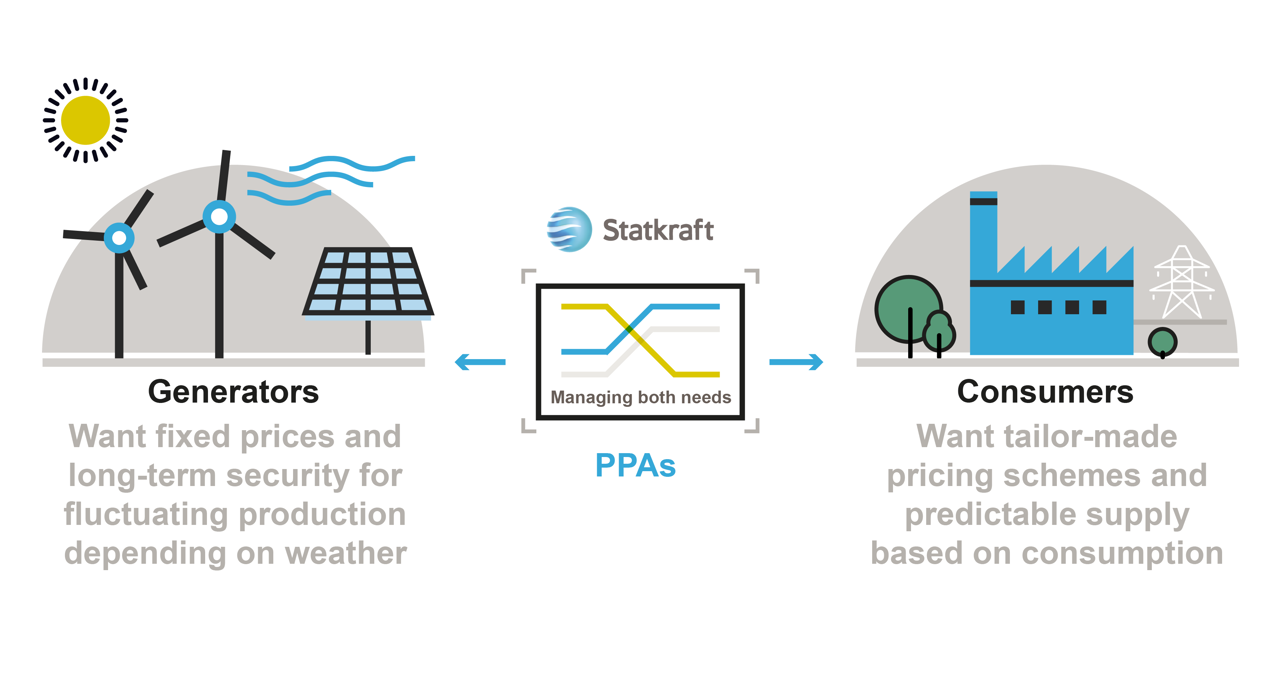Countries

Power purchase agreements (PPAs) help to strengthen the development of renewable power.
PPA: Enables renewable energy growth
A power purchase agreement is a contract between a producer (seller) and a consumer (buyer) of energy. In recent years it has developed into a win-win solution for maintaining and building renewable energy assets without subsidies.

Patrick Koch heads the Upstream Origination unit in Düsseldorf, Germany. The unit is part of Statkraft's Markets business area.
Statkraft is a leading supplier of short- and long-term power purchase agreements, also known as PPAs. In recent years, PPAs have evolved and taken new forms to ensure renewable energy growth.

Power purchase agreements for producers
Generators of fluctuating renewable power need to ensure the profitability of the business. Renewable energy from wind and solar depends on natural conditions that vary widely. In addition, changes in supply and demand in wholesale energy markets are causing prices to fluctuate a lot.
Therefore, it can be difficult to predict the revenue from renewable production. Previously, this economic uncertainty has been reduced by subsidies or feed-in tariffs, which aimed to stimulate renewable energy growth. In a growing number of markets, such subsidy schemes have now or are nearing the end, as renewables become more and more competitive.
"There will be fewer and fewer subsidies or feed-in tariffs in the years to come. Investing in renewable plants will be easier and cheaper, but the need for predictable revenues remains the same. Renewable energy producers must ensure a consistent level of income to guarantee short- and long-term profitability for their plants, and banks and investors will continue to demand a certain level of income and planning security. We therefore expect the number of PPAs to increase in the future," says Patrick Koch, head of the German Origination unit in Statkraft's business area Markets.
Additionally, by guaranteeing the revenues through PPAs, the financing of renewable plant projects outside of subsidy-regimes is enabled. This benefits the overall growth of renewables.

Power purchase agreements for large energy consumers
Industries and companies that supply power to businesses and households need to purchase energy at a predictable cost. Increasingly, PPAs for renewable energy are concluded.
"The reason is a combination of sustainability strategies and a desire to participate in the green shift," says Koch.
"Some buyers want production from renewable sources to actually match real-time consumption, and Statkraft provides planning certainty for fluctuating production," he adds.

Win-win situation
The challenge in the market is that owners of renewable plants and power consumers do not have the same needs. One wants uninterrupted supply, the other can only sell power when it is produced – when the wind blows or the sun shines.
To resolve this conflict, Statkraft meets the needs of both parties:
- Offering predictability and security of supply to consumers thanks to a large portfolio of power plants combining water, solar and wind to ensure a steady supply.
- Providing financial predictability and security for plant owners through the ability to generate stable, predictable revenues.
About PPA
Are there any standards for PPAs?
PPAs are negotiated between counterparties. However, there are standard categorizations for PPAs used in the industry, such as short or long-term to characterize the length or on and off-site to indicate whether the energy-generating plant is in the same location or near the buyer, or whether it's in a different place. In addition, there are financial PPAs that do not involve physical delivery but are only entered into at an economic level.
How is the power delivered from seller to buyer?
In the case of an on-site PPA, the power can be consumed directly on the customer’s site. In most cases, however, the facility is located elsewhere. Therefore, the power is fed into the power grid on the plant’s end, and the grid connects it to the consumer just like for all households that buy energy.
What is the newly emerging category of 24/7 PPAs?
When it comes to renewable power supply, a common obstacle companies face is that their power consumption is not accurately matched by power generation from renewable power plants. This might result in the need to compensate for the lack of renewable power available to them by buying power from fossil fuels in the market.
To solve this issue, Statkraft was the first company to introduce a new model in Germany for Daimler. Statkraft matches the company's consumption pattern in real time by leveraging solar and wind power in combination with hydropower. An independent label such as TÜV in Germany certifies that the power is generated simultaneously at a 15-minute granularity.
It can be called a 24/7 PPA since it covers all consumption needs with renewable energy 24 hours a day, 7 days a week.
How are financial PPAs defined?
In addition to PPAs where energy is delivered physically, there are also financial or virtual PPAs that provide risk management for price fluctuations, without an actual power supply. The buyer and seller agree on a price for an agreed quantity. Power is sold in the spot market, and differences between market price and agreed price are settled between the parties.





















